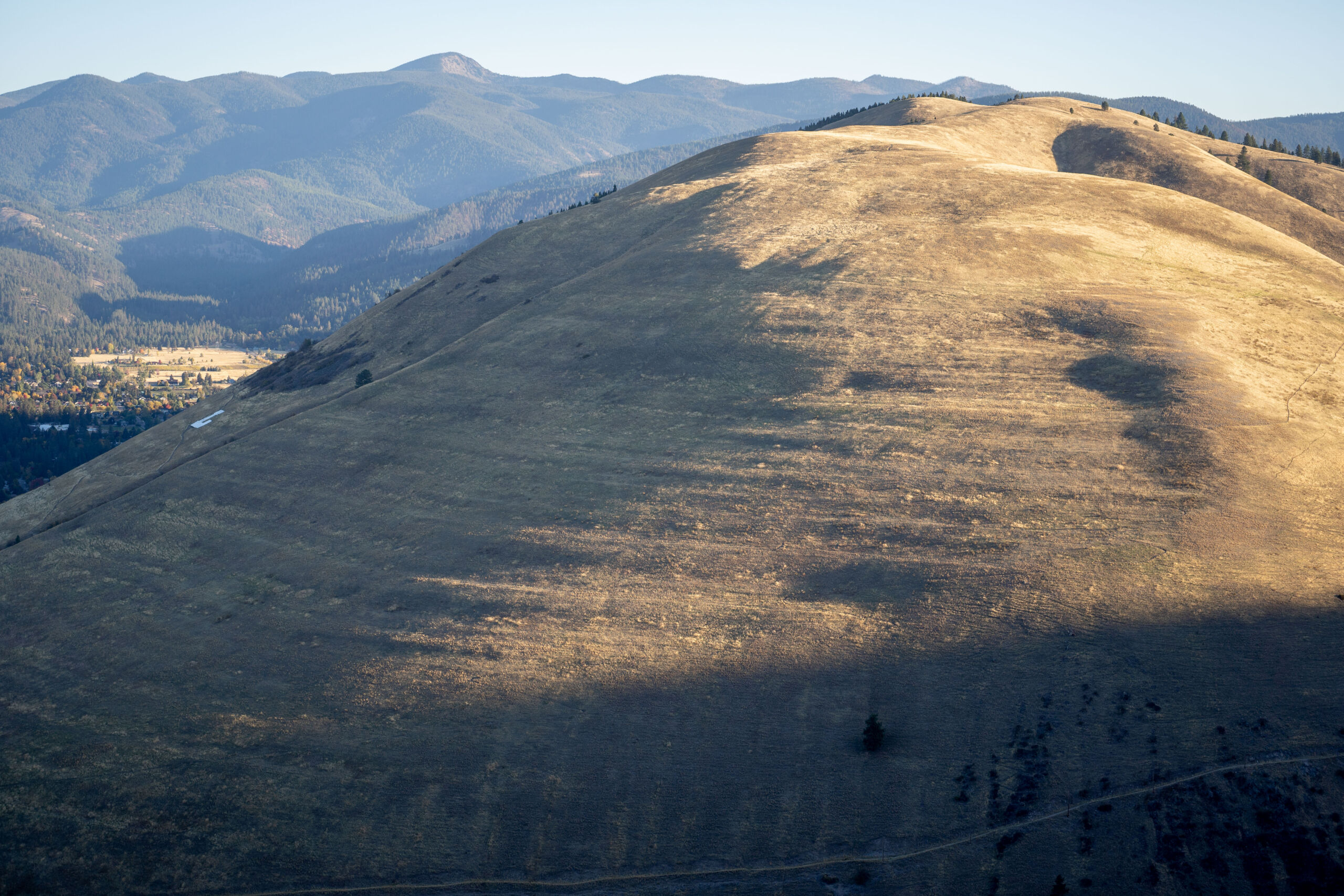by Ars Contributors – Jan 4, 2023 2:00 am
The massive lake that fueled unimaginable floods refilled and emptied many times.
Had the city of Missoula, Montana, existed thousands of years ago, it would have been under water.
During the last Ice Age, a sheet of ice 20 miles wide got stuck in the Idaho panhandle and blocked the Clark Fork River, creating glacial Lake Missoula. At its highest, the water level reached 4,250 feet above sea level—over 1,000 feet above the present city’s altitude. The ice sheet ultimately gave way to the pressure of the water, and glacial Lake Missoula drained catastrophically.
It’s estimated that the biggest flood discharge reached 386 million cubic feet per second. At that rate, it took the lake only a few days to drain, with its waters eventually reaching the Pacific Ocean.
The scariest thing is not the scale of this event—it’s that floods of this size happened multiple times. Thousands of years after that first flood, scientists finally pieced together whether it was a one-time deal by looking to the dirt for answers.
Signs of the past
In the fall of 1969, Rich Chambers drove southwest of Missoula along I-90 with his undergraduate adviser. They pulled over to the side of the road to look at a wall that ran 80 feet into the air. It was zebra-striped, with layers of dark and light sediments running horizontally up the slope.
Missoula is the second-biggest city in Montana, with a population of about 75,000, and it sits in a mountain valley. The University of Montana is known more for its forestry and law schools and less for the giant boulders sitting around campus or the lines on two mountains—visible from about anywhere on campus—that are remnants of the lake that once drowned the valley.
Chambers devoted his undergraduate and master’s work to glacial Lake Missoula, which formed behind the Cordilleran Ice Sheet between 14,000 and 21,000 years ago. The glacial lake would cover almost 3,000 square miles and hold as much water as Lake Ontario and Lake Erie combined.
Chambers’ adviser was David Alt, a well-renowned historian of glacial Lake Missoula. Something Alt wasn’t as familiar with, though, was the sediments left behind after the flood drained the lake—the sort of sediments that he and Chambers found themselves looking at off I-90.
“These are Lake Missoula sediments,” Alt said to Chambers as they stared at the zebra wall. “And nobody’s looking at them in detail.”
If there was to be anything new uncovered about the lake’s history, it would come from sediments like these. And there was some urgency in uncovering it—in the 1970s, there was a big back-and-forth brewing in the scientific community regarding how many times the lake may have drained and refilled.
Land of many lakes
Chambers started classifying Lake Missoula’s sediments and noticed two scales of zebra striping. On the large scale, he found about 40 alternating light and dark soil sequences up to several meters thick. These cycles, called rhythmites in geology-speak, are deposits where the light layers are made up of fine sand and silt deposited by rivers in the early stages of a lake’s filling, while the dark layers are made up of silt and clay that gather on the bottom of filled lakes.
Chambers then noticed that the dark layers had their own zebra stripes. The stripes-within-stripes at this scale are called varves, and they likely represented annual layers of sediment stacked on top of each other. The varves told geologists about the amount of time it took for the lake to fill. Assuming the varves represented annual stackings, Chambers said it took only an average of about 50 years for the lake to refill. Even though the lake’s depth decreased with each filling, that’s still a wild amount of water. At its peak, it was more than 500 cubic miles of water, about half the quantity held in Lake Michigan.
Bit by bit, Chambers and Alt pieced together a picture of the area’s history. In a paper that Chambers and Alt co-authored, they suggested several decades might have passed between each lake draining and filling; in a different paper, Chambers concluded there was no evidence that the glacial lake had drained completely each time. He later argued that the last several lake drainages were less intense, which kept the floods from washing away deposits like the one seen at the roadcut on I-90.
That piece of land off the highway contains at least 800 years of history—and possibly more. It’s unclear how much sediment may have been removed from the record by subsequent floods. Each draining of glacial Lake Missoula could have taken with it evidence of earlier floods.
Where all the water went
Just as Chambers was working on his lake sediments, a paper by J. Harlen Bretz was published.
Bretz spent much of his career studying the Scablands of Eastern Washington. He fought against scientific backlash for his contention that the thrashed landscape of the Scablands could only have been caused by flood waters, which were eventually tied back to glacial Lake Missoula. After more evidence was added to the pile by Joseph Pardee, a Montanan who worked for the United States Geological Survey, Bretz’s ideas were accepted just before he died.
Chambers read Bretz’s paper and found he was calling for the sort of work that Chambers was doing. “Future studies will begin with sections in postglacial stream trenches in floors of various lake-occupied valleys,” Bretz wrote.
Most of the work on glacial Lake Missoula had been outside of the lake basin. That’s what made Chambers’ work so important: He was looking at remnants of the lake where it once sat.
Chambers was able to talk to Bretz on the phone before he died, two years after the paper was published in 1969. “It was awesome,” Chambers recalled.
Reading the soil
Research on the lake didn’t stop when Chambers moved on; lake sediments also play a huge role in Payton Gardner’s work. He’s a geology professor at the University of Montana, and throughout his career, he has seen estimates of the number of times glacial Lake Missoula flooded that range from 20 to 100.
Gardner looks at dirt and can see a history of numerous floods blasting through the Missoula valley. The speed of water is important when looking at glacial soils. When water was still, it allowed fine sediments to pile on top of each other. When the water moved fast, bigger sediments were deposited on top of the finer soils.
This coarse-to-fine pattern created rhythmites, which record flood sequences. Each flood adds a layer of gravel, sand, and then clay. Once the rhythmites were discovered, researchers could start mapping how many there were to understand how many times the lake may have filled and lowered.
But their presence and number don’t constitute definitive evidence. Despite being a visible example of successive floods, Gardner said rhythmites could be wiped out if a later flood eroded a previously settled rhythmite. “One of the problems with a flood deposit is that the next flood could rip out the evidence of previous floods,” he said.
One factor that raised the estimated number of floods was finding better-preserved rhythmites in deeper ravines or farmers’ fields. Gardner said someone could still find an undiscovered rhythmite and that researchers keep “stumbling upon better and better records of the flooding.”
There are also horizontal lines in the terrain of nearby Mount Sentinel and Mount Jumbo that record multiple past lakeshore lines, alluding to more than one filling. When it snows, these benchmarks of historic shorelines are most striking.
Larry Smith, a glacial Lake Missoula researcher with the Montana Technical University, has been researching the lake off and on since the ’90s. He worked on a site near Drummond, Montana, 50 miles east of Missoula, that demonstrated the rising and lowering of the lake level.
“What is so cool about glacial Lake Missoula is that the filling and draining happened on human time scales,” Smith said. “It only may have taken 60 years to fill the lake and it may have taken two weeks to drain… Unlike so many geologic processes that take millions of years, the whole story of the lake filling and draining and everything that happened is a human time scale story.”
Living on the leftovers
Simply standing on the University of Montana campus provides visuals of the natural history of the lake. Large boulders, called “erratics,” were carried by ice rafts or flood water and relocated. Car-sized erratics embedded in ice were carried both within the lake area and as much as 500 miles from the lake by flood waters—some of the erratics weighed up to eight and a half tons.
“They’re all over campus,” Gardner said of the ones that settled within the lake. “Basically every building you go to you see them.” Gardner said that when the foundation was dug for the University of Montana, construction workers kept bumping into these huge boulders.
But glacial Lake Missoula infiltrates itself into life today in a way that goes beyond visual reminders. It also left a mark on the landscape that influences the people living there today. In Missoula, people get their drinking water from groundwater contained in glacial lake and glacial river deposits, Gardner said. He said areas containing big rocks carried by fast-moving water are the best type of aquifer, as the rocks can store more water than tightly packed sediments like silt or clay.
The glacial floods set Missoula up to have a really good aquifer, Gardner said, but a shallow one. At most, it’s 200 feet underneath the surface, which means people are living right on top of it.
“There’s no protection against us contaminating our aquifer,” Gardner said. That contamination could come from fertilizer runoff or spilling oil when changing it in a car.
Gardner said there’s also a chance for lower groundwater levels due to climate change. Researchers know that temperature is increasing, Gardner said, but the certainty around precipitation levels is much lower. He said in Montana, there’s likely to be less snow and more rain in the future. Snow recharges the groundwater more than rain does; Gardner said the only time the groundwater is recharged in Western Montana is March through June, when the snow melts.
“The more we understand climate history and the ecological history, [the better we can] understand how these systems will respond to future climate changes,” Gardner said.
Glacial Lake Missoula doesn’t show him how the aquifer works, but it demonstrates how variable the climate was 15,000 years ago. Every bit of the landscape in the Missoula Valley was shaped by the glacial lake, from the types of trees that grow to where water is found, “and that links to our own human activities today,” Gardner said.
He can’t walk around Missoula without thinking of the legacy left behind by the floods.
Keely Larson is a journalist based in Missoula, Montana. She has published in a variety of Montana state outlets and freelances for national publications with a focus on environmental topics.




